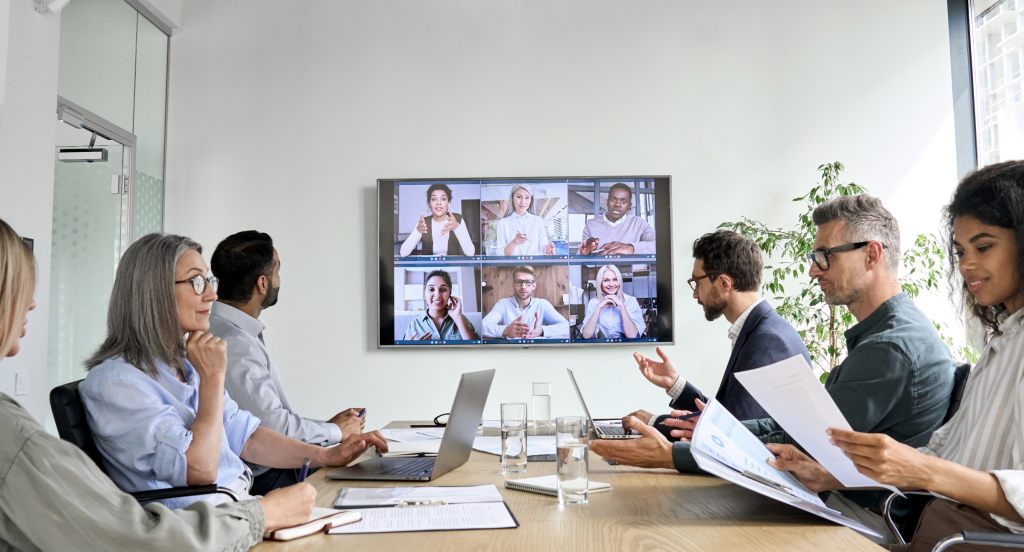The COVID-19 pandemic has forced people all over the world to change the way they work – and connect with each other for work-related purposes. One of the most significant changes is the way we communicate with our colleagues. Gone are the days when we would have in-person meetings around a conference table on a regular basis. These days, we usually rely on video conferencing to stay connected with our coworkers and business partners. But how do you set up a conference room for video conferencing? In this post, we will give you a step-by-step guide on how not to get lost on the way to a perfect video conferencing experience.
What are the benefits of video conferencing?
Video conferencing is a great way to stay connected with employees, business partners, clients, and customers alike. It’s also an efficient way to conduct business meetings and training sessions. There are many benefits of video conferencing, including:
- Increased productivity – video conferencing can help you save time and travel costs by eliminating the need for in-person meetings.
- Easier communication – video conferencing can let more people take part in a meeting at the same time and have a say.
- Cost savings – video conferencing can be a cost-effective alternative to travel for business meetings and training sessions. Also, if going green is your thing, you’re doing something good for the planet if you choose to connect online instead of travel for business.
- Flexibility – video conferencing can be a solution you can take advantage of anytime, anywhere, which makes it a really convenient option for busy professionals.
- Improved collaboration – video conferencing can translate into better collaboration outcomes by allowing team members to work together on projects in real-time.
What are the challenges of video conferencing?
One of the challenges of video conferencing is to make sure that everyone can see and hear the speaker clearly. This can be difficult if the room is not set up correctly. Another challenge is keeping everyone interested in the discussion. It can be easy for people to become disengaged if they are not able to see or hear the person who is speaking – or if there are connection issues. Finally, it can be challenging to keep track of who is speaking and when. This can be especially challenging if there are multiple speakers on the agenda.
The impact of video conferencing on conference room design
When it comes to conference room design, the impact of video conferencing cannot be understated. In order to accommodate video conferencing, conference rooms need to be designed with both the technology and the furniture in mind – not to mention the user experience. In terms of technology, if you’re going to connect from your office, you need to have a dedicated space for the video conferencing equipment. This could mean having a TV or projector set up in the room specifically for video calls, or simply having an area where laptops can be set up for video chats. And then there’s the issue of the right furniture to accommodate and/or work together with all the tech you need. And while a feature-packed conference room may be the default choice, it may not always be possible to get everyone together at the same time – not to mention situations when your conference room is occupied right when you need to use it.
The solution? Have you considered using conference pods? These ‘rooms in a room’ are standalone, complete conferencing solutions that offer all the features you need to organize and take part in a video conference. Comfy, ergonomic furniture? Check. The right audio and video equipment? Check. Privacy? Check. So if you your workplace doesn’t offer a dedicated video conferencing space, you can change it in a very easy way – and with a few such units in place, you can be sure that your people can use them whenever the need arises.
How to set up a conference room for video conferencing
But if we’re still talking a typical office conference room, in order to set it up for video conferencing purposes, you will need to:
- Choose a room that has good lighting and is free from distractions and noise.
- Furnish the room with a table and chairs for all participants.
- Place the camera at eye level in the center of the table.
- Connect the audio system and test it to make sure everyone can be heard clearly.
- Make sure there is a strong Wi-Fi connection in the room.
Once everything is set up, it’s time to test the connection. Make sure there is no lag or static on the line before starting your video conference. And last but not least, remember to dress appropriately for the occasion! Although it might seem like a small detail, first impressions matter, so make sure you look presentable and professional. And that’s it, you’re all set!




